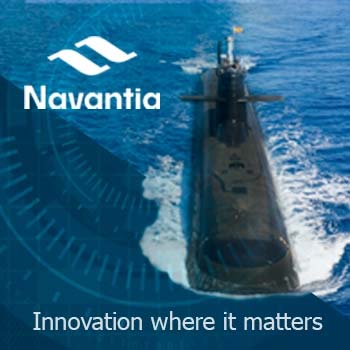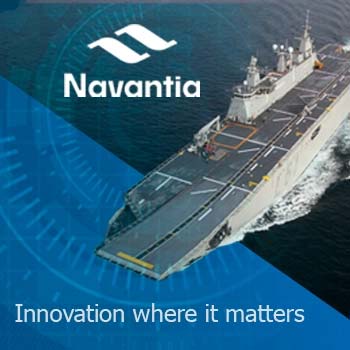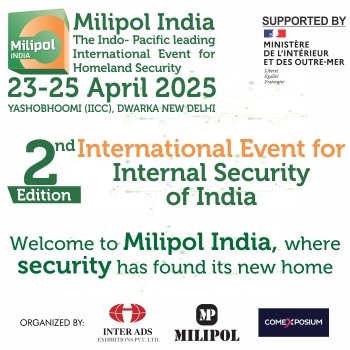New Delhi: The bi-annual Naval Commanders Conference concluded on November 3, 2022. Defence Minister Rajnath Singh interacted with the senior leadership of the Indian Navy during the Naval Commander’s Conference on November 2. He witnessed a Tech Demonstration along the sidelines of the Conference. He appreciated the Navy for the efforts invested towards indigenisation and innovation in the recent years, while urging the Naval Commanders to maintain focus on futuristic capability development for effectively overcoming emerging challenges in the Maritime Domain.
The defence minister also commended the Navy for maintaining a high Operational tempo towards ensuring secure seas for national security and prosperity. He congratulated the Navy for successful commissioning of INS Vikrant, India’s first indigenously designed and constructed Aircraft Carrier and adoption of a new Naval Ensign, shedding vestigial linkages to our colonial past.
In consonance with the views of the defence minister, the Chief of Defence Staff, in his maiden address to the Naval Commanders since assuming charge, reiterated the need for Operational preparedness, Atmanirbharta and the need for further integration in the Armed Forces towards collectively meeting India’s National Security imperatives.

The Chief of Army Staff, the Chief of Air Force Staff and the Chief of Integrated Defence Staff to the Chairman, Chiefs of Staff Committee (CISC) also interacted with the Naval Commanders and discussed avenues of further augmenting Tri-Services’ synergy and readiness, considering the prevailing Security environment.
The Conference provided an opportunity to the Naval Commanders to introspect on important Maritime matters at the Military Strategic level. Along the sidelines of the conference, the Naval Commanders also interacted with various ‘Think Tanks’ on Strategic issues.
In his address, CNS Admiral R Hari Kumar emphasised on Continuity and Change. Continuity is not status quo – rather, it is clear focus on the Navy’s goals which often will, and must, challenge the status quo. In this regard, continuity also serves as a driver for change – some subtle, some pronounced, but all of them, positive, he said.
“The best example that concurrently showcases continuity and change was the commissioning of Vikrant – without a doubt a seminal event in the history of the Nation and the Navy. Vikrant’s commissioning was a manifestation of sustained efforts of generations of naval leadership – a true embodiment of continuity of vision and effort. At the same time, Vikrant’s commissioning, was also marked by momentous change, as we adopted the new Naval Ensign. This change, reflecting the larger National intent to shed colonial vestiges, was brought about in a swift and decisive manner – reflecting our organisational agility and responsiveness,” he concluded.
Highlighting the achievements, CNS said that focus on ordnance centricity has been encouraging with a large number of successful missile and torpedo firings in the last campaign season – encompassing multiple systems – include different variants of the BRAHMOS missile. At the force levels, Vikrant has been a substantial addition to our ORBAT. Commissioning of two ALH squadrons have been notable capability enhancers. Further, with the launch of Surat, Udaygiri, Dunagiri, Nistar, Nipun, and Nirdeshak; along with trial progress of Mormugao, Vagir, Vagsheer; our force levels are poised for a significant fillip. Concomitant efforts towards developing commensurate infrastructure, materiel and logistics planning, as well as suitable human resource development has been noteworthy.

He further pointed out that the maiden concurrent deployment of Indian Navy ships across six continents on August 15 this year, served as valuable signalling to underscore our credibility – at home, in the region, and across the world. In the last six months, operational deployments have also emphasised our credibility, with a footprint covering all major oceans of the world. In this regard, P8I operations across the IOR has also been valuable strategic communication.
CNS Hari Kumar also talked about the unveiling of 75 challenges through SPRINT at the Swavlamban Seminar and expressed satisfaction for having retained focus on remaining a combat ready, credible, cohesive, and future-proof force. Complimenting ‘Team Navy’, he reiterated that continuity on this trajectory is not just desirable – but extremely vital – to stay ahead of the curve in protecting national maritime interests in the complex security scenario being faced today.
The complex security landscape, challenges with the rise of non-state actors, expanding influence of large corporations, etc. influencing India’s strategic and security calculus also found mention in CNS address.
He said that there is a renewed impetus on a ‘Whole of Nation’ approach to national security. The security paradigm is evolving, ever so rapidly, and the changes therein, will need to be factored in everything that we do – planning, deployment, maintenance, and human resource development. And in navigating the turbulent security scenario, remaining a ‘Combat Ready, Credible, Cohesive and Future Proof Force’, enabled by a SHIPS FIRST outlook, is vital. This dyad, would drive the twin aspects of ‘continuity and change’, enabling us to effectively follow an aspirational trajectory into the future.









